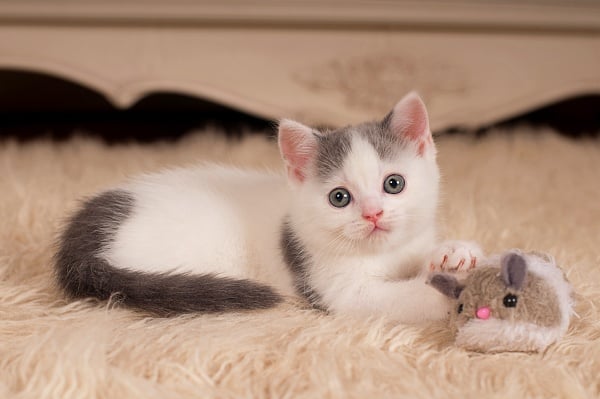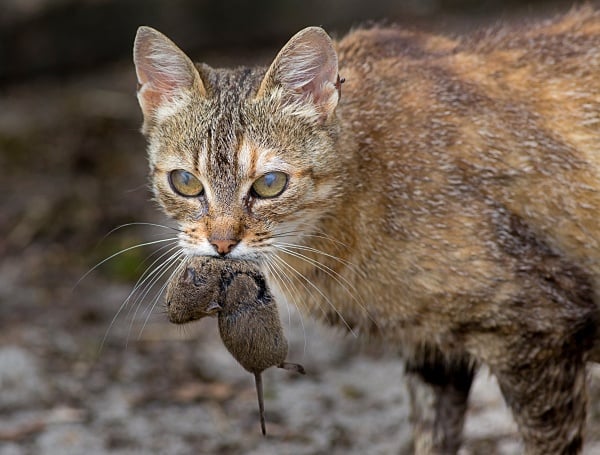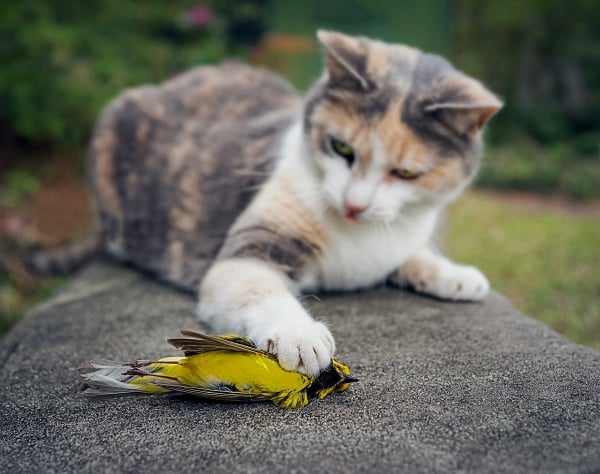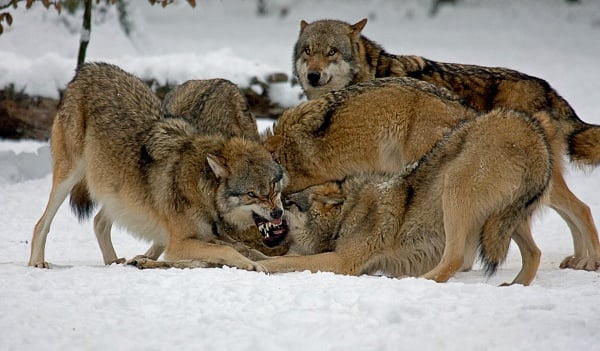In our articles, we often talk about the necessity to ensure your cat is feeling secure by providing them with elevated locations, placing litter boxes in secure areas as well as other methods to ensure your cat feels safe.
But feels safe from what? Domestic house cats rarely encounter things that are more dangerous than vacuum cleaners, tumble dryers or toddlers. But the truth is that their instincts still dictate that they should always be cautious of rivals and larger predators. Let’s find out what cat enemies are in the wild.
In this article, you’ll learn what an apex predator is, are cats predator or prey, where they rank as predators, how they defend themselves, and what their worst enemies are.

Table of Contents
What is an apex predator?
An apex predator is one that is at the top of the food chain. In the ocean, you have the killer whale or Orca that is on the top, even the great white shark is their prey. On land, all wild animals fear a lion or tiger as they are the top wild predators. But what about our four legged fur balls we know and love as our house cats? You may be surprised that they are opportunistic hunters. This means they will hunt when the opportunity presents itself. Ever have your house cat bring you a dead mouse as a present? They didn’t hunt for food, but because they are following their natural instincts.
What are cats, predators or prey?

Cats are both prey and predator. What? How can our precious feline friends that are so cute be a predator? A recent article from the New York Times reports that Australia is taking steps to reduce the impact of feral cats on native species.
Invasive species are the biggest drivers of biodiversity loss in Australia. And feral cats are the most invasive in the country’s landscape, killing an estimated two billion animals per year.
Tanya Plibersek, Australia’s Environment Minister
Native species of birds and other small animals are the perfect prey type for feral cats to live on. As a result, these prey populations are in decline due to predation. Domestic cats are fed and cared for by humans where other wild predators aren’t. This reduces their predation on wildlife in urban environments. Feral cats however rely on their hunting skills to survive so they develop them to survive making them highly effective predators.
Where do cats rank as predators?

Feral cats are apex predators in local environments and a mid tier predator in general. This means they rule in places where larger predators aren’t everywhere like urban environment. In other areas, they are a mid tier predator and are prey to the larger predators. As a result, populations of prey animals such as reptiles, rodents, and birds in urban environments can decline significantly as cat populations rise unchecked.
Since old cats are efficient predators and prey more often on rodents than younger ones, they may be especially beneficial by removing pest animals from the yards and grain stores.
Source: bioone.org
You have probably heard of a food chain. It defines who eats who. In most cases, the smaller the individual is, the lower on the food chain it resides, unless it has a specific talent. For example, eagles are able to fly, humans are able to think, and cats are able to climb. Their impact on bird populations is something that many urban environments are coming to grips with given cats are very effective predators of native birds. In areas where a given prey species is less available, feral cats adapt to hunt different types of prey.
How do cats defend themselves?
Cats defend themselves with sharp teeth and razor sharp claws as many cat owners couch shows. Not only can they defend themselves, they are excellent hunters. The ability to climb along with being fast, excellent eyesight, and excellent hunting skills are the main reason why cats are so successful in the food chain. These abilities make them the top ambush predator in many locations of the world. Cats are able to sit in silence and wait to ambush their prey. Their predation on rodents is well known and not just in cartoons. Cats aren’t the only natural predators of rodents but they are the probably the best way to keep rodent populations in check. Many farms and food production facilities use them to keep rodent populations down.
What are cats worst enemies?

Cats worst enemies include predators such as cougars, mountain lions, foxes, coyotes, raccoons, snakes, and even birds of prey. In the most technical sense, there are no natural predators for cats. However, there are some animals that are reported to attack and consume cats frequently as a food source. These are wild predators that:
- Live in the same area
- Are larger and stronger than cats
- Are small enough to receive a decent amount of food from a single cat
There are other predators of a similar size and similar capabilities. However, no textbooks list cats as a part of these animals’ natural diets, and the reported attacks, shouldn’t be considered the norm. That said, in 2016, a live nest camera in Pittsburgh caught bald eagle feeding a cat to their eaglets. Nature finds a way.
Are dogs and wolves natural enemies of cats? While attacks are reported, cats aren’t normally hunted and consumed by dogs or wolves. Wolves are social animals and target prey that is significantly larger than themselves, bringing it down using teamwork, thus providing food for the whole group. There wouldn’t be much meat to share from a single cat, even if wolves managed to ambush one.
But the above doesn’t mean that cats aren’t afraid of larger predators. Quite the opposite. The fact that they always take precautions is an important contributing factor to the fact that cats are top predators almost everywhere they live.
This means that the major part of providing a stress-free life for a cat in your home is to add some places for your cat to climb. Even though there aren’t any predators in your bedroom, your cat will be pleased if their instincts to survive can still be satisfied by having an escape available. They also love having a view of their world. This goes back to their predator instinct of having a view so they can spot their next meal. Or in our house, to avoid the scary predator (in their minds) that is the vacuum cleaner.
You’ve learned what an apex predator is, are cats predator or prey, where they rank as predators, how they defend themselves, and what their worst enemies are. This knowledge will help you understand your cat’s behavior better. This will go a long way towards a happy life for you and your pet cat. And keeping your Pet Happy is what we all want.
